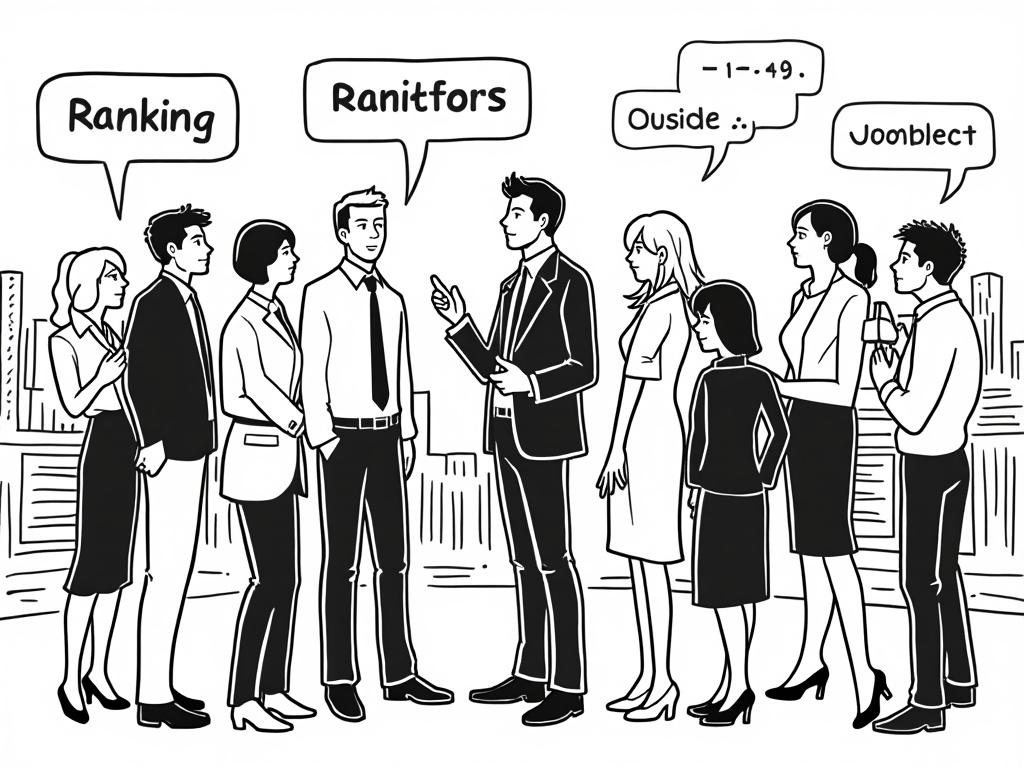
UAE in Global Competitiveness Index: The Emirates’ Strategic Rise in Global Rankings
Reading time: 12 minutes
Ever wondered how the UAE transformed from a desert landscape into a global economic powerhouse that consistently ranks among the world’s most competitive nations? The answer lies in strategic vision, bold investments, and a relentless pursuit of excellence that’s reflected in international competitiveness rankings.
The Global Competitiveness Index (GCI) has become the gold standard for measuring national economic performance, and the UAE’s journey through these rankings tells a remarkable story of transformation and ambition.
Table of Contents
- Understanding the Global Competitiveness Framework
- UAE’s Current Position and Performance
- Key Competitive Strengths Driving Success
- Challenges and Strategic Opportunities
- Regional and Global Comparative Analysis
- Strategic Roadmap for Continued Growth
- Frequently Asked Questions
Understanding the Global Competitiveness Framework
Well, here’s the straight talk: The Global Competitiveness Index isn’t just another ranking system—it’s a comprehensive assessment tool that measures a nation’s ability to provide rising prosperity for its citizens.
The World Economic Forum’s methodology evaluates 12 key pillars across four critical areas:
The Four Foundational Categories
Enabling Environment: This encompasses institutions, infrastructure, ICT adoption, and macroeconomic stability. Think of it as the bedrock upon which competitive advantage is built.
Human Capital: Health and skills development form this category, recognizing that a nation’s people are its greatest asset.
Markets: Product, labor, financial systems, and market size determine how efficiently resources flow through the economy.
Innovation Ecosystem: Business dynamism and innovation capability separate the leaders from the followers in today’s knowledge economy.
Each pillar receives a score from 0 to 100, with 100 representing the ideal state. Countries are then ranked based on their overall performance across all metrics.
UAE’s Current Position and Performance
The UAE has consistently maintained its position as the Middle East’s most competitive economy, ranking 25th globally in the latest Global Competitiveness Report. This achievement becomes even more impressive when you consider the Emirates started this journey just five decades ago.
Breaking Down the Numbers
Let’s examine the UAE’s performance across key metrics with this comprehensive comparison:
| Competitiveness Pillar | UAE Score (0-100) | Global Rank | Regional Rank |
|---|---|---|---|
| Infrastructure | 87.4 | 6th | 1st |
| ICT Adoption | 82.1 | 18th | 1st |
| Financial System | 78.9 | 12th | 1st |
| Business Dynamism | 75.2 | 16th | 1st |
| Innovation Capability | 68.3 | 32nd | 1st |
The Infrastructure Excellence Story
Quick Scenario: Imagine landing at Dubai International Airport—one of the world’s busiest. Within minutes, you’re connected to world-class metro systems, highways, and digital networks that rival any developed nation. This isn’t coincidence; it’s strategic planning in action.
The UAE’s infrastructure score of 87.4 places it 6th globally, ahead of countries like Germany and Japan. This achievement stems from decades of visionary investment in:
- Transport Networks: Dubai Metro, Abu Dhabi’s integrated transport system, and world-class airports
- Digital Infrastructure: 5G coverage reaching over 90% of urban areas
- Energy Systems: Renewable energy initiatives and smart grid implementations
- Urban Planning: Smart city initiatives across all seven emirates
Key Competitive Strengths Driving Success
Ready to transform complexity into competitive advantage? The UAE’s success stems from several strategic pillars that other nations often struggle to replicate.
Strategic Geographic Positioning
The Emirates leveraged their position as a bridge between East and West, creating what experts call “competitive geography.” Dr. Nasser Saidi, former Chief Economist at the Dubai International Financial Centre, notes: “The UAE has masterfully exploited its geographic advantage to become a global hub for trade, finance, and logistics.”
Diversification Success
While many regional economies remain oil-dependent, the UAE has achieved remarkable diversification:
UAE Economic Diversification Progress
30%
25%
20%
15%
10%
Regulatory Excellence and Ease of Doing Business
The UAE’s business-friendly environment consistently attracts international investment. The country ranks among the top 20 globally for ease of doing business, with reforms that include:
- 100% Foreign Ownership: Recent legislative changes allowing full foreign ownership in most sectors
- Golden Visa Program: Long-term residency for investors and skilled professionals
- Free Zones: Over 45 specialized economic zones with tax incentives
- Digital Government Services: 90% of government services available online
Challenges and Strategic Opportunities
Even the most competitive economies face hurdles. The UAE’s journey hasn’t been without challenges, but understanding these obstacles reveals opportunities for continued growth.
The Skills Gap Challenge
Despite significant investments in education, the UAE faces a persistent skills gap in emerging technologies. The country’s innovation capability ranking of 32nd globally, while regional leader, suggests room for improvement.
Challenge: Heavy reliance on expatriate talent in technical fields
Opportunity: Developing comprehensive upskilling programs and strengthening local STEM education
Sustainability and Climate Resilience
As global focus shifts toward sustainability, the UAE faces the challenge of maintaining competitiveness while achieving carbon neutrality by 2050.
Current Initiative: The UAE has invested over $50 billion in renewable energy projects, including the world’s largest single-site solar park.
Market Size Limitations
With a population of approximately 10 million, the UAE’s domestic market size ranks lower compared to global competitors. However, this limitation has driven innovative solutions:
- Positioning as a regional hub serving 2 billion people within a 4-hour flight
- Creating specialized economic zones targeting specific industries
- Developing world-class logistics and re-export capabilities
Regional and Global Comparative Analysis
Understanding the UAE’s competitive position requires context. Let’s examine how the Emirates stack up against both regional and global competitors.
Regional Leadership Position
Within the Middle East and North Africa (MENA) region, the UAE maintains clear leadership across virtually all competitiveness metrics. The country’s nearest regional competitor, Saudi Arabia, ranks 36th globally—11 positions behind the UAE.
Key Differentiators:
- Institutional Quality: The UAE scores 15 points higher than the regional average
- Infrastructure Development: 25-point advantage over nearest regional competitor
- Market Efficiency: Leading financial system development in the region
Global Benchmark Comparison
Compared to top-tier competitive economies like Singapore (1st), Switzerland (3rd), and Denmark (4th), the UAE demonstrates strength in specific areas while revealing growth opportunities in others.
“The UAE’s competitiveness profile resembles that of advanced economies, particularly in infrastructure and business environment, while showing emerging market characteristics in human capital development,” observes Prof. Arturo Bris, Director of the World Competitiveness Center at IMD.
Strategic Roadmap for Continued Growth
The UAE’s ambitions extend far beyond current achievements. With Vision 2071 aiming to make the UAE the world’s best country by 2071, the strategic roadmap focuses on several key areas.
Innovation and Technology Leadership
The Emirates AI Strategy 2031 targets making the UAE among the world’s leading AI-powered nations. This includes:
- Establishing AI councils in every government entity
- Creating the world’s largest AI and robotics applications lab
- Launching the Global AI Council
Human Capital Development
Recognizing that sustainable competitiveness requires local talent development, the UAE has launched:
- One Million Arab Coders Initiative: Training Arab youth in programming
- Mohammed bin Rashid Innovation Fund: Supporting local entrepreneurship
- UAE Centennial 2071: Long-term human capital strategy
Sustainable Economic Growth
The UAE’s Net Zero by 2050 strategy positions the country as a leader in sustainable development while maintaining economic competitiveness through green innovation.
Pro Tip: The right preparation isn’t just about avoiding problems—it’s about creating scalable, resilient foundations for long-term competitiveness. The UAE’s approach demonstrates how strategic vision, coupled with pragmatic execution, can transform national competitiveness.
Frequently Asked Questions
How has the UAE’s Global Competitiveness ranking changed over the past decade?
The UAE has shown remarkable consistency, maintaining its position among the top 30 most competitive economies globally. The country has improved from 27th position in 2014 to 25th in the latest rankings, demonstrating steady progress despite global economic volatility. Most significantly, the UAE has strengthened its regional leadership position, with the gap between the Emirates and other MENA economies widening over time.
What specific factors contribute most to the UAE’s high competitiveness score?
Infrastructure development stands out as the UAE’s strongest pillar, ranking 6th globally with a score of 87.4. The country also excels in ICT adoption (18th globally), financial system development (12th), and business dynamism (16th). These strengths reflect decades of strategic investment in physical and digital infrastructure, creating an enabling environment for business growth and innovation.
What challenges must the UAE address to improve its global ranking further?
The primary areas for improvement include innovation capability (currently 32nd globally) and human capital development, particularly in local skills development. Additionally, while the UAE excels in market efficiency, expanding the domestic market size through population growth and economic diversification remains a strategic priority. Addressing these challenges through targeted policies and investments could propel the UAE into the top 20 globally within the next decade.
Your Competitive Advantage Blueprint
The UAE’s journey from desert to global competitor offers valuable lessons for businesses, investors, and policymakers worldwide. As we look toward the future, several key trends will shape the Emirates’ continued rise in global competitiveness rankings.
Your Strategic Next Steps:
- Monitor Infrastructure Investments: Track the UAE’s continued infrastructure development as a leading indicator of future competitiveness
- Leverage Digital Transformation: Capitalize on the UAE’s advanced ICT adoption for business expansion or investment opportunities
- Engage with Innovation Ecosystems: Connect with the UAE’s growing startup and innovation communities
- Understand Regulatory Advantages: Explore the benefits of new business-friendly regulations and free zone opportunities
- Plan for Sustainability Integration: Align strategies with the UAE’s Net Zero 2050 commitment
The convergence of artificial intelligence, sustainability imperatives, and changing global trade patterns will create new dimensions of competitiveness. The UAE’s proactive approach to these trends positions the nation well for continued success, but the real question remains: How will your organization or investment strategy adapt to leverage the UAE’s evolving competitive advantages?
As global economic power continues to shift eastward and southward, the UAE’s strategic positioning between traditional and emerging markets makes it not just a regional leader, but a critical player in the global competitiveness landscape of tomorrow.

Article reviewed by Emre Demir, Cross-Border Investment Broker | Bridging Europe & Middle East, on June 4, 2025



